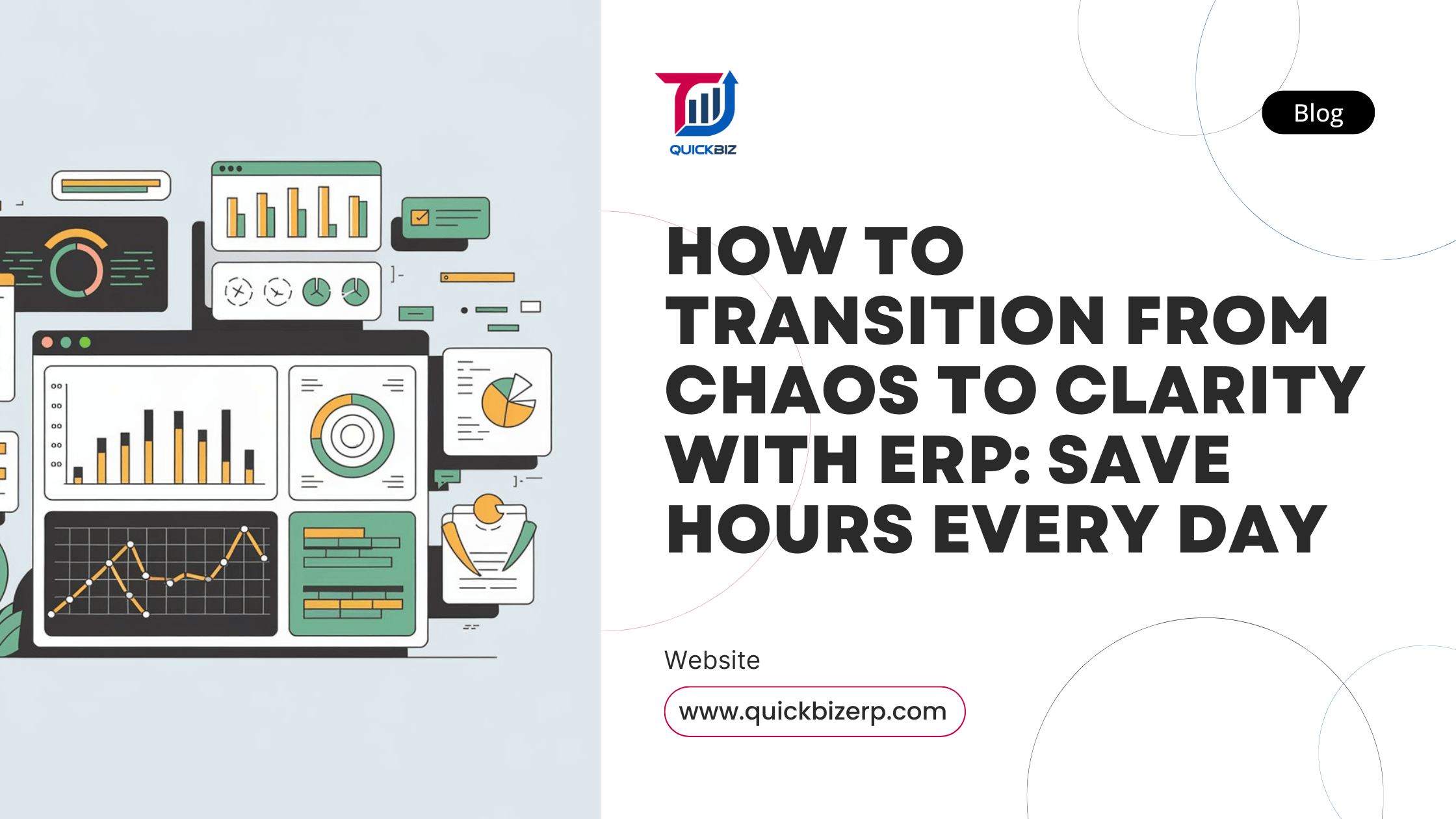How to Transition from Chaos to Clarity with ERP: Save Hours Every Day

Introduction
Running a business often feels like juggling too many tasks at once—managing fragmented systems, tackling manual errors, and constantly trying to keep up with inefficiencies. This chaos not only drains your time but also stifles growth. For small and medium-sized enterprises (SMEs), time is a crucial asset that can’t be wasted on inefficiencies.
That’s where an ERP (Enterprise Resource Planning) system comes in. By automating processes, integrating data, and streamlining operations, ERP systems provide the clarity businesses need to focus on what truly matters—growth and customer satisfaction.
Main Content
1. What is an ERP System?
An ERP system is a software solution that integrates various business processes into a single platform. It acts as a central hub, enabling seamless collaboration across departments like finance, inventory, sales, and human resources.
Core Functionalities of ERP:
- Real-time data access for better decision-making (Explore ERP analytics benefits)
- Automation of repetitive tasks to reduce manual errors.
- Integration of all business processes for a unified workflow.
By centralizing operations, ERP eliminates silos and ensures everyone works with consistent, accurate information.
2. Signs Your Business Needs an ERP System
If your business struggles with the following, it’s time to consider ERP:
- Data Silos: Teams using separate systems lead to inconsistencies and delays in decision-making.
- Manual Errors: Repetitive manual processes often result in mistakes that affect operations and customer satisfaction.
- Wasted Hours: Time spent reconciling data and managing inefficient workflows takes away from strategic tasks.
Example: Imagine a manufacturing SME managing inventory through spreadsheets. Stock shortages or excess inventory become frequent, impacting production schedules. ERP resolves this by providing real-time inventory data and automating stock management.
3. How ERP Brings Clarity and Saves Time
An ERP system transforms chaos into clarity through the following:
- Automation of Repetitive Tasks: Automates invoicing, reporting, and inventory tracking, freeing up employees to focus on value-added tasks.
- Centralized Data for Quick Decision-Making: With all data in one place, managers can access accurate insights instantly.
- Improved Collaboration Across Teams: Teams work on a unified platform, ensuring seamless communication and coordination.
4. Top Benefits of Implementing ERP
- Time Savings: ERP reduces time spent on manual tasks, allowing businesses to focus on growth strategies.
- Reduced Errors: Automation minimizes human errors, ensuring accuracy in critical operations like finance and inventory.
- Real-Time Insights: Access to real-time data empowers businesses to make proactive and informed decisions.
5. Overcoming Implementation Challenges
While ERP offers immense benefits, implementation can feel daunting. Here’s how to navigate challenges:
- Choose the Right ERP System: Assess your business needs and select an ERP solution tailored to your industry and size.
- Employee Training and Adaptability: Provide training to ensure employees are comfortable using the system and adapting to new workflows.
Proactive planning and involving your team in the selection process can significantly ease the transition.
Conclusion
ERP systems are a game-changer for businesses seeking to transition from operational chaos to clarity. By automating processes, centralizing data, and enabling better collaboration, ERP systems save time and empower businesses to thrive in competitive markets. If you’re ready to streamline your operations and reclaim valuable hours each day, now is the time to explore an ERP solution tailored to your needs (Cloud ERP solutions).

